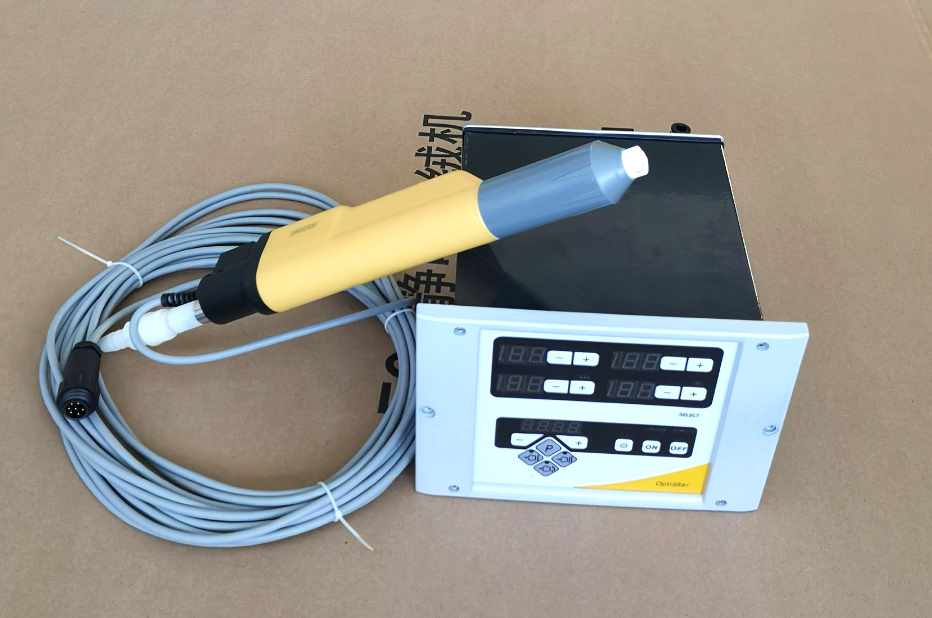Flocking presses are an integral part of the screen pri […]
Flocking presses are an integral part of the screen printing process. They can be used in any flat screen printing line. These machines consist of one or more flocking units that load flocks of different colours and pass them through a series of screens. The flock then covers the desired part of the drawing. The movement of these flocking units is synchronized with the speed of the printing press. Some flocking machines have a suction cup mounted on the front to pre-clean the flock before applying it to the paper. They also provide brushes at the oven outlet to remove any remaining lint.
structure
Flock printing machines have many different components. First, the flocked fibers are placed in a box or hopper 20 . They are then physically pushed through a distribution screen 21, preferably made of metal mesh. Once there, they are transferred to a piece of paper or substrate. Then, the hot surface is placed on the sheet or substrate. The surface is heated and a flock pattern is applied on the printed surface. After the fluff transfer is complete, the fluff is removed from the machine and the image screen is permanently attached to the fabric.
The upper printing unit is the container, and the lower printing unit is the gluing machine. With a flock printer, the process of applying flock to fabric is very simple. During flock printing, a colored adhesive is applied to the fabric or paper.
Function
A flocking press is a device that applies flocking to a substrate. It is self-contained and can be carried. It uses a flocked screen made of natural or man-made fibers, depending on the number of meshes required for the effect. The screen has a flocked adhesive that transfers the design to the garment. After the flocking process is complete, place the garment in the oven to cure the adhesive.
The flocking cycle can be started manually or automatically. The operator can also manually rotate the flocking tray before flocking. During this process, the microswitches are turned off, delaying the energization of the high-voltage electrodes in the flocking tray. After the flocking cycle begins, the flocking tray moves up and maintains the platen contact with the garment.
cost
A flocking press is a machine that applies flocking to a substrate. The process is relatively simple and involves making the stencil, applying the adhesive to the substrate, and adding the flock. Once flocking is applied, it needs to cure and dry. If the flocking does not adhere to the formwork, it can be removed manually or with the help of a hair dryer or vacuum cleaner.
There are many flocking machines to choose from. The machine is designed to print on roll-to-roll fabrics. It has a plexiglass flocking compartment for added safety and a vacuum to remove flocking.
fabric to print
The process of flock printing starts with applying adhesive to the fabric to be printed. Flocking is then added to the material and the process is completed by curing and drying. If any fluff comes off or does not adhere to the stencil, it can be removed by hand, blower or vacuum.
Special effect
Flea printing is a process that uses flocked fibers to create patterns on a surface. Flocked fibers are applied to the surface of the adhesive-coated release sheet. Adhesives The adhesive is usually a water-based acrylic and bonds the flock into one unit. Adhesives Adhesives can also be emulsions or solutions and include polyvinyl chloride, polyester or acrylic resins.
Electrostatic flocking application is the most effective way to create dense coverage and increase attractiveness. Beater bars can enhance electrostatic flocking applications.
adhesive used
There are several different types of flocking adhesives, the most common type being water-based adhesives. Depending on the printing application, flocking adhesives can be air dried or temperature cured. They are applied using brushes, rollers, spray or screen printers. However, there are some important factors to consider before choosing the right flocking adhesive.
The fineness of the flock, the length of the fibers and the density of the adhesive coating are all factors that determine the softness of the flock. If the flock is too thin or too short, it can be difficult to handle and will clump or form into balls during processing.
Collection device
The flock printer is equipped with a collection device that removes excess flock from the processing area. The unit then sends the flock back to the flocking machine. There are many types of flocking machines, each with its own characteristics. This article will focus on two flocking machines and give a detailed explanation of each.
Flock printing Machine uses a printable flock adhesive. This adhesive is usually soft and elastic and helps the flock fibers adhere to the substrate. Such adhesives may be water-based or plastisol-based. Most US printers use plastisol, but water-based flocking adhesives are more common in other countries. Water-based flocking adhesives are also less expensive and more widely used by printers that prefer to use water-based inks.

GA02 AUTO POWDER GUN REPLACEMENT
GA02 AUTO POWDER GUN WITH 12METERS CABLE AND CG06 CONTROLLER